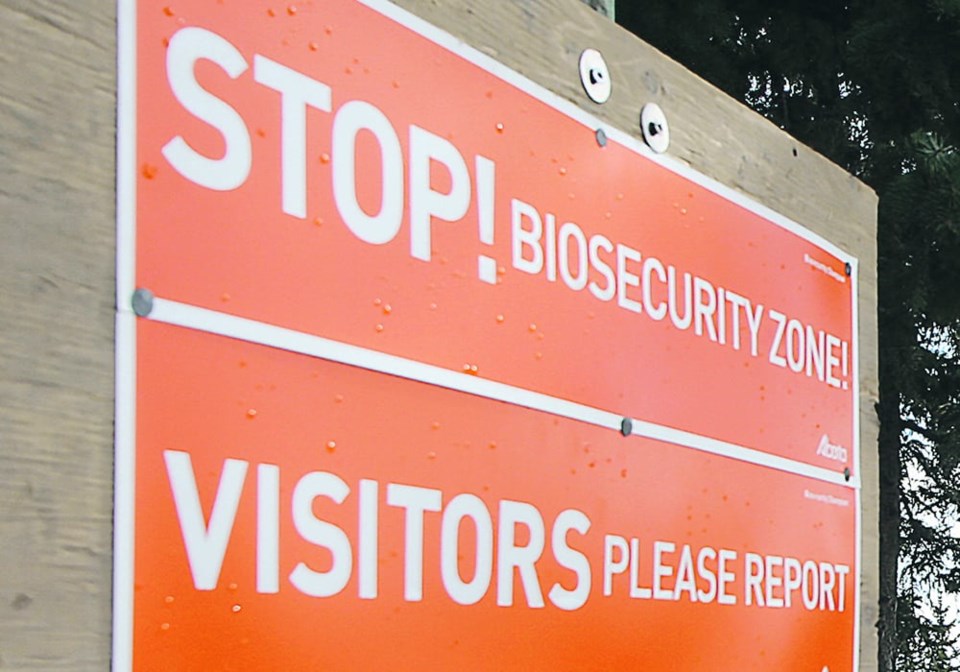WESTERN PRODUCER — Federal action is needed to protect the livelihoods of Canadian producers from the looming threat posed by foot-and-mouth disease, said a national beef industry leader.
It is not a question of if the illness will land in Canada, but when, said Nathan Phinney, president of the Canadian Cattle Association.
“And when we show the value of our business — $60 billion that could be shut down if it enters if we don’t have the vaccine here to mitigate — it is totally unacceptable in our view.”
He estimated it will cost about $4 million per year to build up a vaccine bank to help minimize the spread of outbreaks. The virus is so contagious that CCA prefers to place the bank in a tight biosecurity facility in France rather than in Canada, he said.
FMD is a danger to many livestock types, he said during an interview at the recent annual general meeting of Alberta Beef Producers in Red Deer.
“It affects sheep, goats, pigs, dairy, so it affects all classes of cloven hoof livestock and wildlife as well, so everybody’s got an important place to play here to ensure that we get this done.”
As a former horse veterinarian in the United Kingdom, Renate Weller regarded herself as a tough cookie. However, little prepared the current dean of the University of Calgary’s Faculty of Veterinary Medicine for what she experienced during an outbreak in the early 2000s in the United Kingdom. She was one veterinarian drafted by the government as part of a national effort to destroy animals infected by the disease.
“They drafted everyone. There wasn’t a question. Everyone got drafted, small animal (veterinarians), even if you were specialized in exotics, you got drafted.”
It led to a cull of more than six million cattle, pigs and sheep on more than 10,000 farms.
“You can’t really prepare someone for the smell, for the crying animal owners, for the crying farmers and ranchers,” said Weller during an online interview.
“Honestly, every now and then I still wake up in the morning because you have those mountains of carcasses and they don’t burn easily, I can tell you that, so it’s not necessarily an experience I wish on anyone and I certainly don’t want to repeat that.”
Animals infected by the virus may not show clinical signs right away, said rancher and former practising veterinarian Melanie Wowk, who is a past chair of ABP. They can carry it for two to three days before developing symptoms, such as ulcers on the mouth and tongue, which means they are shedding the virus without displaying the illness, she said.
“The problem with (the virus) is it’s very hardy, so it lives long outside of the animal and it also spreads like wildfire… theoretically, you can bring it in on your shoes.”
It is so painful for infected animals that they initially don’t want to eat or move, said Wowk.
“It’s especially extremely painful for pigs, and so they lose weight and they can die from not eating and not drinking.”
Surviving animals tend to never fully recover, becoming what producers call chronic poor doers, said Wowk. Farmers such as feedlot operators who must work within narrow margins to make a profit only have a certain number of days to feed their cattle and get a sufficient rate of gain, she said.
“You’ve got an animal that’s not eating and drinking and also, like I said, it’s hard to watch. I’ve seen videos of pigs with it and it’s horrible.”
Exports bring in as much $1,100 per head for Canadian beef producers, said Phinney.
“We need to maintain these borders open and ensure that if something happens, we can mitigate the amount of time that they will be shut down.”
Wowk said the impact of an outbreak on Canadian producers will likely be more severe than BSE, not only resulting in a potentially massive cull of animals but also cutting farmers off from foreign markets as countries ban exports. It could also impact industries such as travel and tourism by restricting movement of people to prevent the disease from spreading, she said.
She was encouraged by the recent progress farm organizations such as ABP are having in Ottawa.
“That’s been my push for the last seven years, being a part of Alberta Beef Producers doing some federal lobbying. We have been pushing not only for the vaccine but also for a national preparedness response to foot-and-mouth, and I really, really feel like we’re gaining traction now.”
It is difficult to say what such a response will involve or how long it will last, said Wowk.
“Would we just shut down Alberta? Would we just shut down that area in Alberta, or would we shut down the whole country, and then what about the (United States)?”
The North American beef market involves Canada, the United States and Mexico, she said.
“Cattle are moving every day across the border of Mexico, and then we’ve got to remember that Mexico is closer to Central and South America. Cattle come up from there. Brazil’s got it, so it’s scary.”
Phinney attended a presentation at a recent convention of the National Cattlemen’s Beef Association in New Orleans. It illustrated the extent of the global movement of container ships and the flight patterns of planes on any given day, he said.
“And it’s very concerning that (this disease) could come in on somebody’s shoes or it could come in on a meat product, so our biosecurity is very important that we make sure we follow all the steps and try to keep this out of the country.”

